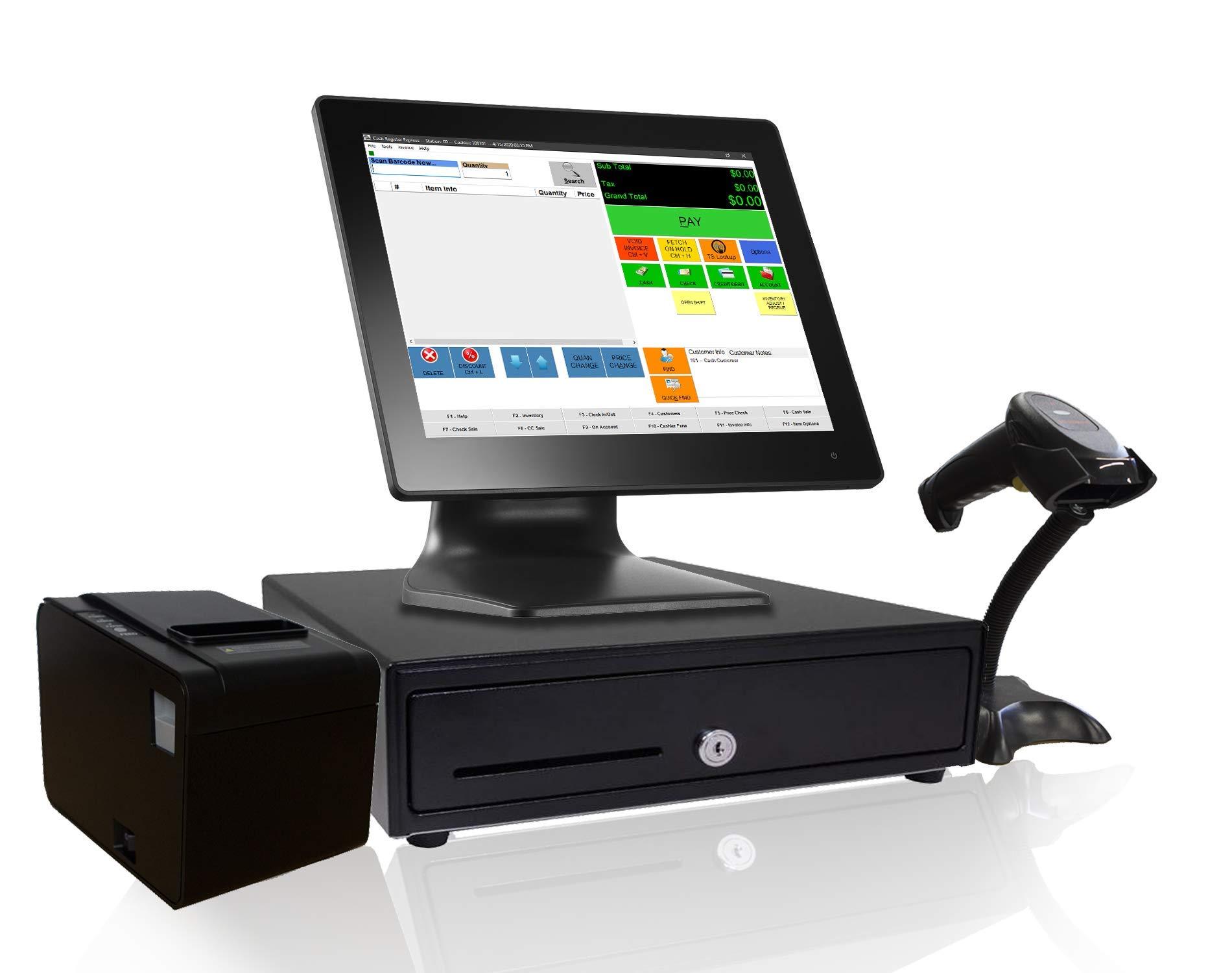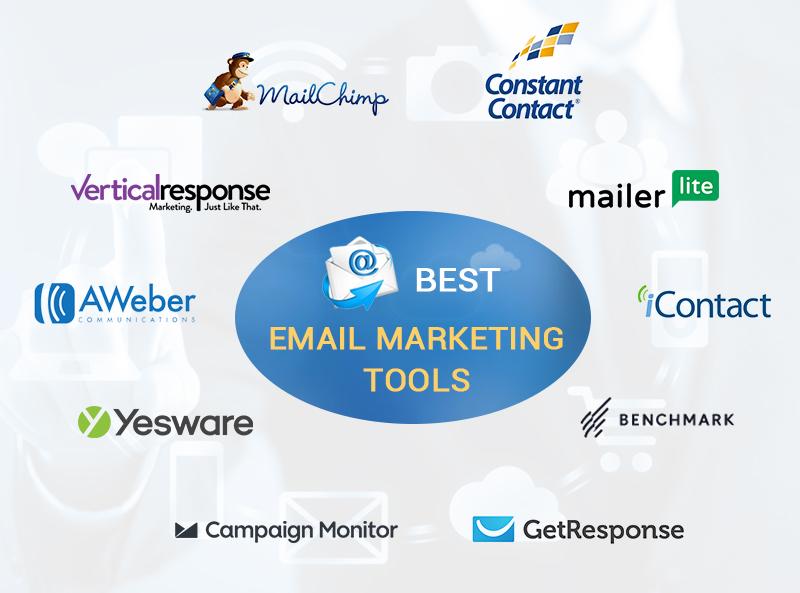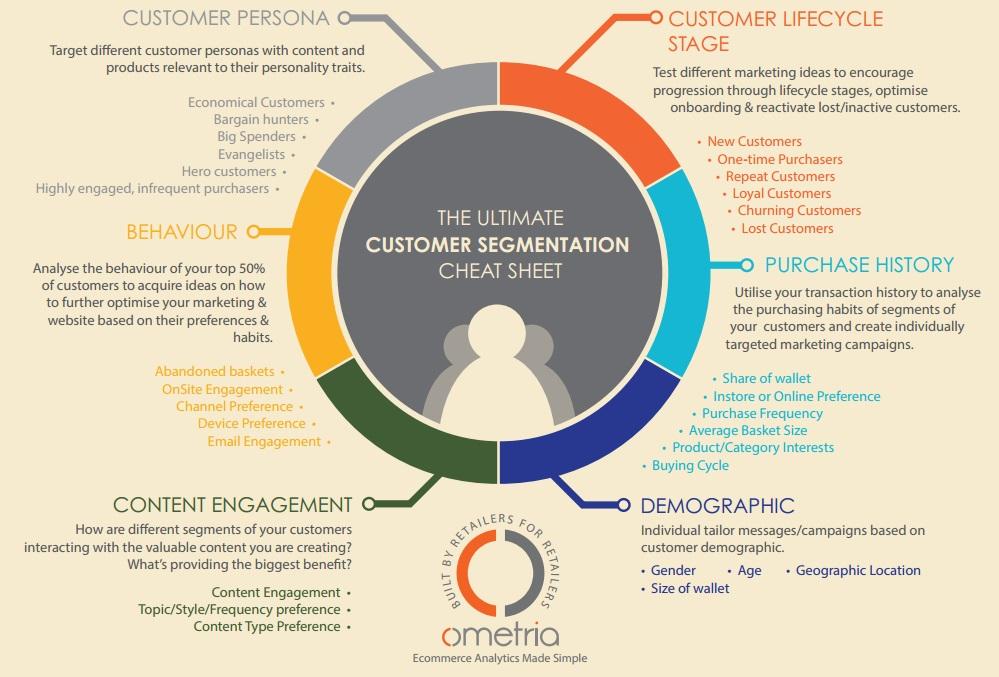
In today’s fast-paced digital marketplace, understanding your customers is more crucial than ever. E-commerce is booming, but with countless brands vying for attention, how do you ensure your business stands out? The answer lies in effective customer segmentation. Imagine being able to tailor your marketing strategies to specific groups of consumers, enhancing their shopping experience and boosting your sales simultaneously. Sounds like a dream, right?
Welcome to our comprehensive guide on e-commerce customer segmentation! We’re diving deep into why segmenting your audience is not just a good idea, but a game-changer for your online business. With real-world examples and actionable insights, we’ll show you how to identify and engage with different customer segments, ensuring that your offerings resonate with the right people at the right time. Whether you’re a seasoned pro or just starting out, this guide is packed with valuable tips to help you unlock the full potential of your e-commerce strategy. So, let’s get started on the path to more personalized marketing and increased sales!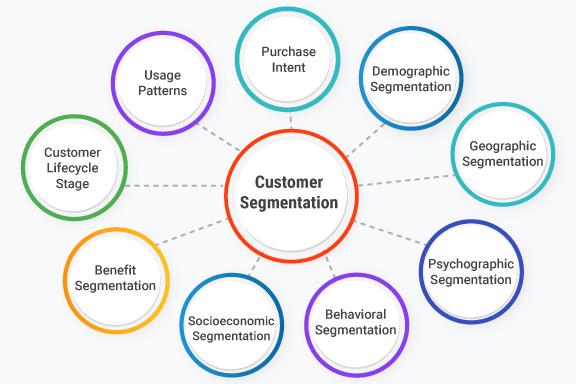
Understanding the Importance of Customer Segmentation in E-commerce
In the rapidly evolving world of e-commerce, understanding your customers is no longer optional; it’s essential. Customer segmentation allows businesses to categorize their audience based on shared characteristics, such as demographics, purchasing behavior, and preferences. By diving deep into these segments, e-commerce businesses can tailor their strategies, ensuring they deliver the right messages to the right people at the right time.
One of the primary benefits of customer segmentation is the enhanced personalization it offers. When you know your customers’ preferences and behaviors, you can create targeted marketing campaigns that resonate with them. This could mean personalized email marketing, product recommendations, or even customized landing pages. Imagine receiving an email that features products you’ve been browsing; that personal touch can significantly increase engagement and conversion rates.
Moreover, segmentation plays a critical role in optimizing your marketing budget. Instead of casting a wide net and hoping to catch a few interested customers, targeted campaigns can help you allocate resources effectively. By focusing on specific segments, companies can reduce wasted ad spend and achieve higher returns on investment (ROI). For instance, a business that understands its audience can invest more in platforms that yield the highest engagement rates for their target demographic.
Understanding customer segmentation also aids in improving customer retention. When customers feel understood and valued, they are more likely to return. By analyzing the purchasing patterns and preferences of your various segments, you can develop loyalty programs and special offers that resonate with specific groups, fostering brand loyalty. Consider implementing a tiered rewards program where frequent buyers receive exclusive access to sales or early product launches tailored to their interests.
To illustrate the impact of segmentation, let’s take a look at a simple comparison table:
| Segment | Marketing Approach | Expected Outcome |
|---|---|---|
| First-Time Buyers | Welcome emails with discount codes | Increased conversion rates |
| Returning Customers | Personalized product recommendations | Higher average order value |
| High-Value Customers | Exclusive VIP events and offers | Boosted customer loyalty |
Another critical aspect of segmentation is enabling better product development and inventory management. By analyzing which segments are purchasing which products, businesses can forecast trends and adjust their inventory accordingly. If data shows that a particular demographic is leaning towards eco-friendly products, companies can increase their stock of these items, catering to demand while promoting sustainability.
the importance of understanding customer segmentation in e-commerce cannot be overstated. It fosters personalization, optimizes marketing efforts, enhances customer retention, and informs product strategy. When done right, customer segmentation transforms a one-size-fits-all approach into a dynamic, responsive strategy that not only meets customer needs but anticipates them, creating a stronger, more loyal customer base.
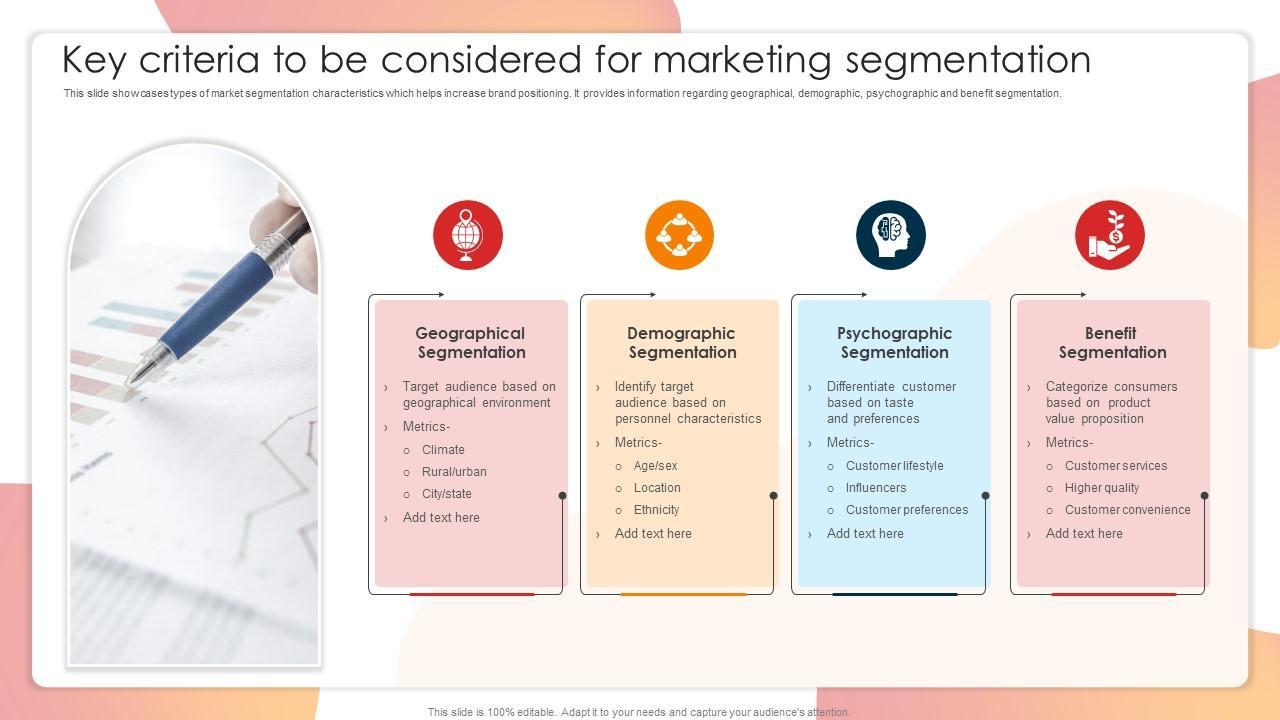
Identifying Key Segmentation Criteria for Your Business
When aiming to tailor your e-commerce strategies, identifying the right segmentation criteria is essential. It allows you to better understand your customers and cater to their specific needs, ultimately driving sales and building loyalty. Here are some key criteria to consider:
- Demographic Criteria: Age, gender, income, and education level are fundamental metrics. They help paint a clear picture of your target audience, guiding product offerings and marketing strategies.
- Geographic Criteria: Understanding where your customers are located can impact shipping strategies, promotions, and even product selection. Different regions may have unique preferences or seasonal buying patterns.
- Behavioral Criteria: Analyzing purchase history and website interactions provides insights into customer preferences. Look for patterns in browsing behavior, purchase frequency, and cart abandonment rates to refine your targeting.
- Psychographic Criteria: Dive deeper into customers’ lifestyles, values, and interests. This qualitative data helps create tailored messaging that resonates on a personal level, encouraging engagement and conversion.
- Technographic Criteria: Knowing what technology your customers use, such as devices, operating systems, and platforms, can tailor your site’s functionality and marketing campaigns effectively.
Additionally, consider using a table to visualize how these criteria match up with your business goals:
| Segmentation Criteria | Business Goal |
|---|---|
| Demographic | Targeted Advertising |
| Geographic | Localized Promotions |
| Behavioral | Enhanced Customer Experience |
| Psychographic | Brand Loyalty |
| Technographic | Optimized User Interface |
By regularly analyzing these criteria and adapting your segmentation strategies accordingly, you can ensure your e-commerce business stays relevant and competitive. Keep in mind that customer preferences evolve, so flexibility in your approach is vital.
do not forget to leverage advanced analytics tools and customer feedback to refine your segmentation. Engaging directly with your customers through surveys or social media can uncover new insights and trends that may not be immediately apparent.
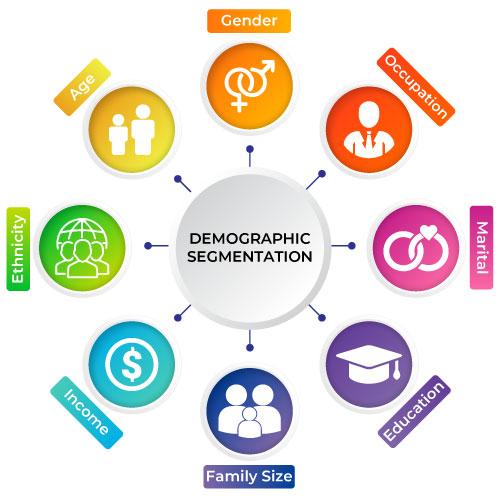
The Power of Demographic Segmentation: What You Need to Know
Demographic segmentation is a powerful tool in the arsenal of any e-commerce business. By understanding the distinct characteristics of your customer base, you can tailor your marketing efforts to specific groups, maximizing engagement and driving sales. This strategy allows businesses to move beyond a one-size-fits-all approach, offering personalized experiences that resonate with individual customers.
At its core, demographic segmentation involves categorizing your audience based on factors such as:
- Age: Different age groups often have unique preferences and purchasing habits.
- Gender: Tailoring products and marketing messages to appeal specifically to men or women can enhance effectiveness.
- Income Level: Understanding the financial capacity of your customers helps in price positioning.
- Education Level: This can influence product choice and the way information is communicated.
- Location: Geographic segmentation can impact shipping options, product availability, and marketing strategies.
Utilizing these demographic variables allows businesses to construct detailed customer profiles. For instance, a company selling luxury skincare products might target high-income women aged 30-50, while a brand focused on affordable fitness gear may appeal to younger, budget-conscious consumers. This targeted approach not only improves customer satisfaction but also boosts conversion rates.
Moreover, demographic segmentation can inform product development. By analyzing the preferences and needs of different demographic groups, e-commerce brands can innovate and adapt their offerings accordingly. For example, if research shows that millennials prefer eco-friendly products, a business can expand its product line to include sustainable options, appealing directly to this demographic’s values.
To illustrate the potential of this segmentation strategy, consider the following table showcasing different demographic groups and tailored marketing approaches:
| Demographic Group | Marketing Approach |
|---|---|
| Millennials (Ages 25-40) | Social media campaigns highlighting sustainability and brand values. |
| Gen Z (Ages 18-24) | Influencer partnerships and interactive content to enhance engagement. |
| Baby Boomers (Ages 55+) | Email marketing with detailed product descriptions and loyalty programs. |
| Parents | Bundles and discounts for family-oriented products. |
In addition to improving marketing efficiency, demographic segmentation also aids in resource allocation. By identifying the most lucrative segments, e-commerce businesses can focus their advertising budgets on channels that yield the highest ROI. This strategic focus not only saves money but also enhances the brand’s overall market presence.
demographic segmentation is not just a beneficial practice; it’s an essential strategy for e-commerce companies seeking to thrive in a competitive landscape. By leveraging demographic insights, businesses can craft targeted messaging, enhance customer experiences, and ultimately drive growth. The real power lies in understanding your audience deeply and responding to their unique needs, truly transforming how you connect with them.
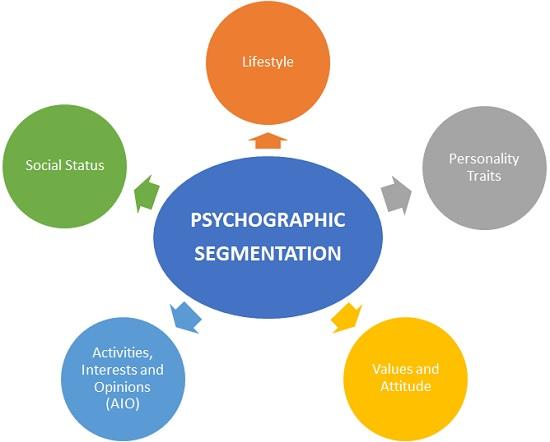
Psychographic Segmentation: Tapping into Customer Values and Lifestyles
When it comes to understanding your customers in the e-commerce realm, psychographic segmentation is a game changer. This approach goes beyond the traditional demographic data of age, gender, or income level to dive deeper into what truly drives consumer behavior. By exploring customers’ values, beliefs, interests, and lifestyles, businesses can create a more personalized shopping experience that resonates on a deeper level.
At the heart of psychographic segmentation is the understanding of customer motivations. Knowing why a customer makes a purchase can inform everything from marketing strategies to product offerings. Here are a few key factors to consider:
- Values: What principles do your customers hold dear?
- Lifestyles: How do they spend their time and money?
- Interests: What hobbies or activities do they engage in?
- Personality Traits: Are they adventurous, status-driven, or eco-conscious?
For example, if your target audience values sustainability, they might prefer brands that practice environmentally friendly production methods. By segmenting your customers based on these psychographic insights, you can tailor your messaging to highlight your commitment to sustainability, thereby increasing engagement and building loyalty.
Implementing psychographic segmentation can significantly enhance your marketing strategies. By using customer personas that embody distinct psychographic profiles, you can create tailored campaigns that speak directly to the heart of your audience.
| Psychographic Profile | Marketing Strategy |
|---|---|
| Eco-Conscious Consumers | Highlight sustainable practices and eco-friendly products. |
| Health Enthusiasts | Promote wellness-related products and healthy lifestyle content. |
| Luxury Seekers | Focus on exclusivity, quality, and premium experiences. |
Moreover, psychographic segmentation allows for more effective ad targeting. Social media platforms and Google Ads enable you to reach specific audiences based on their interests and values, ensuring that your ads are seen by the people most likely to convert. This strategic targeting can lead to higher click-through rates and a more efficient allocation of your marketing budget.
Incorporating psychographic data into your analytics can also lead to invaluable insights. By analyzing how different segments respond to various campaigns or product launches, you can refine your strategies over time. This iterative approach not only enhances customer satisfaction but also drives higher sales performance.
In a crowded e-commerce landscape, understanding the psychographics of your customers is not just beneficial; it’s essential. By tapping into these deeper layers of consumer behavior, you create a more meaningful connection with your audience, foster brand loyalty, and ultimately drive sustained growth.
Behavioral Segmentation: How Purchase Patterns Can Drive Sales
Understanding your customers’ purchase patterns is like holding a treasure map to increased sales and customer loyalty. By analyzing how, when, and why customers buy, businesses can tailor their offerings and marketing strategies to fit the unique behaviors of different segments. This form of segmentation allows brands to anticipate needs, personalize experiences, and ultimately drive sales higher.
Identifying Purchase Triggers
To effectively segment based on behavior, start by identifying the triggers that motivate purchases. These can include:
- Seasonal Trends: Recognizing that certain products sell better during specific times of the year can help in planning inventory and promotions.
- Promotional Responses: Understanding which customers respond to discounts, loyalty programs, or flash sales can guide your marketing strategies.
- Product Affinities: Analyzing which products are often bought together can reveal cross-selling opportunities.
Building Customer Profiles
Once you’ve identified triggers, it’s time to build detailed customer profiles. This involves collecting data on:
- Average order value
- Purchase frequency
- Preferred shopping channels (mobile, desktop, social media)
- Return behaviors (frequent returns might indicate dissatisfaction)
Leveraging Data for Targeted Marketing
Once customer profiles are established, use this data to craft targeted marketing campaigns. For instance, if a segment prefers email promotions, personalize these emails with specific products based on previous purchases. This approach can enhance engagement and increase conversion rates.
Utilizing Behavioral Analytics Tools
Modern e-commerce platforms offer a range of behavioral analytics tools that can help track and analyze customer behavior in real-time. Tools like Google Analytics, Hotjar, or Kissmetrics provide invaluable insights into customer journeys. By leveraging these tools, you can:
- Monitor user engagement on your site
- Identify drop-off points in the purchasing process
- Gauge the effectiveness of marketing campaigns
Creating Dynamic Segments
Behavioral segmentation is not a one-time task. As customers interact with your brand over time, their behaviors may change. Create dynamic segments that evolve based on real-time data. This agility allows you to adapt quickly and ensure that your marketing efforts remain relevant.
Examples of Effective Behavioral Segmentation
| Segment | Behavior | Marketing Strategy |
|---|---|---|
| Frequent Buyers | Purchase 3+ times a month | Exclusive loyalty offers and early access to new products |
| Seasonal Shoppers | Buy during holidays | Targeted holiday promotions and themed products |
| Cart Abandoners | Add to cart but do not purchase | Retargeting ads with reminders and discounts |
By focusing on these behavioral patterns and implementing targeted strategies, businesses can not only enhance their marketing effectiveness but also foster a deeper, more meaningful relationship with their customers. This strategic alignment ensures that your brand remains top-of-mind and continues to grow in a competitive e-commerce landscape.
Geographic Segmentation: Tailoring Offers to Local Markets
When it comes to e-commerce, understanding your audience is key, and one of the most effective ways to achieve this is through geographic segmentation. This strategy allows businesses to tailor their marketing efforts and product offerings to specific local markets, enhancing customer engagement and driving sales.
Different regions often have unique preferences, cultural nuances, and economic conditions that influence buying behavior. By analyzing these factors, e-commerce companies can create tailored campaigns that resonate with local audiences. Here are some essential strategies to consider:
- Localized Content: Crafting marketing materials that reflect local language, culture, and interests can significantly increase relevance. For instance, using local slang or references in social media ads can foster a deeper connection with the audience.
- Region-Specific Promotions: Consider running promotions that are timed with local events or holidays. For example, a summer sale in a region that celebrates warm weather activities can boost sales effectively.
- Customized Product Selection: Modify your product offerings to fit local tastes. For instance, a clothing brand might offer lighter materials in warmer areas while focusing on warmer clothing in colder regions.
Using geographic segmentation not only enhances customer satisfaction but also improves operational efficiency. By focusing on specific areas, businesses can optimize their inventory and supply chain processes. Here’s how:
| Region | Product Focus | Marketing Channel |
|---|---|---|
| North | Winter Apparel | Email Marketing |
| South | Swimwear | Social Media Ads |
| East | Outdoor Gear | Influencer Partnerships |
| West | Health Supplements | Content Marketing |
Implementing geographic segmentation also means leveraging data analytics. By utilizing tools that provide insights into local shopping habits and preferences, businesses can refine their strategies further. This might include:
- Customer Feedback: Collecting local customer feedback can provide invaluable insights into specific needs and preferences.
- Sales Data Analysis: Analyzing sales data by region helps identify trends and potential areas of growth.
- Competitor Analysis: Understanding what resonates with local competitors can help inform your strategies and improve market positioning.
Ultimately, the more accurately you can segment your customers by geographic location, the better you can serve them. This tailored approach not only enhances customer experiences but also fosters brand loyalty. Embrace the power of geographic segmentation and watch your e-commerce business thrive in local markets.
Creating Buyer Personas: A Step-by-Step Guide
Understanding your customers is pivotal in e-commerce, and creating detailed buyer personas is a surefire way to enhance your marketing strategies. Let’s dive into how you can effectively create these personas.
1. Conduct Thorough Research
Begin by gathering data on your current customers. Utilize surveys, interviews, and analytics tools to understand:
- Demographics (age, gender, location)
- Buying habits (frequency, preferred channels)
- Interests and hobbies
- Pain points and challenges
Make sure to analyze your competitors as well. Understanding their customer base can provide insights that may benefit your own persona development.
2. Identify Patterns and Segments
With your data in hand, start identifying patterns. Group your findings into segments based on shared characteristics. For example, you might find:
- A segment that prioritizes sustainability
- Younger customers who prefer mobile shopping
- Bargain hunters versus luxury buyers
Each segment can evolve into a unique buyer persona, helping you tailor your marketing messages accordingly.
3. Craft Detailed Persona Profiles
Now, let’s get creative! For each segment, develop a detailed profile that includes:
- Name: Give your persona a relatable name.
- Demographic Details: Age, gender, income level.
- Goals: What are they looking to achieve with your product?
- Challenges: What obstacles might they face?
- Preferred Shopping Channels: Online, social media, in-store.
This comprehensive profile will serve as a guide for your marketing strategies, ensuring you connect with your audience effectively.
4. Validate and Refine Your Personas
Once your buyer personas are established, it’s crucial to validate them. Seek feedback from your sales team and conduct A/B testing on your marketing campaigns to see if your personas resonate with actual customers. Keep an eye on:
- Engagement rates
- Conversion rates
- Customer feedback
Use this data to refine your personas continuously, adapting to changing customer needs and market trends.
Example Buyer Persona Table
| Persona Name | Age | Interests | Challenges |
|---|---|---|---|
| Eco-Friendly Emma | 28 | Sustainability, Travel | Finding affordable eco-products |
| Bargain Hunter Bob | 35 | Shopping, Discounts | Quality vs. Price |
| Luxury Lucy | 42 | Fashion, Exclusivity | Access to exclusive products |
By creating and refining your buyer personas, you can better tailor your marketing strategies, resulting in improved customer engagement and higher conversion rates. Start building those personas today, and watch your e-commerce business thrive!

Utilizing Data Analytics for Effective Customer Segmentation
In today’s competitive e-commerce landscape, understanding your customer base is paramount. Leveraging data analytics for customer segmentation allows businesses to tailor their marketing strategies, optimize resource allocation, and enhance customer experiences. By dissecting customer data, you can create segments that not only reflect purchasing behaviors but also align with your overarching business goals.
To effectively utilize data analytics for segmentation, start by collecting relevant data points. This may include:
- Demographic Information: Age, gender, income, and location.
- Behavioral Data: Purchase history, browsing patterns, and engagement metrics.
- Psychographic Profiles: Interests, values, and lifestyle choices.
Once you gather this data, employ analytical tools to identify patterns and trends. For instance, clustering algorithms can group customers based on similarities, while regression analysis can help determine factors that drive purchases. The insights derived from these analyses can inform your segmentation strategies, allowing you to create highly targeted marketing campaigns.
Consider the various types of customer segments you can create:
- High-Value Customers: Those who frequently purchase or have high average order values.
- Occasional Shoppers: Customers who make sporadic purchases but may respond to targeted promotions.
- New Visitors: First-time buyers who require nurturing to encourage repeat business.
Utilizing these segments, you can tailor your messaging and product offerings. For example, high-value customers might appreciate exclusive promotions or loyalty rewards, while occasional shoppers could benefit from personalized recommendations or limited-time discounts. By aligning your marketing efforts with the needs and behaviors of each segment, you can significantly enhance engagement and conversion rates.
Moreover, utilizing data analytics enables ongoing refinement of your segments. As customer behaviors and market dynamics evolve, continuous analysis allows you to adjust your strategies accordingly. This agility ensures that your business remains responsive to changing consumer preferences and can capitalize on emerging trends.
To illustrate the impact of effective segmentation, consider the following table showcasing potential promotional strategies tailored to different customer segments:
| Customer Segment | Promotional Strategy |
|---|---|
| High-Value Customers | Exclusive loyalty rewards and early access to sales |
| Occasional Shoppers | Targeted email campaigns featuring personalized recommendations |
| New Visitors | Welcome discounts and educational content about your brand |
the integration of data analytics into your customer segmentation efforts can transform your marketing approach. By understanding who your customers are and what they value, you can create more personalized experiences that drive loyalty and ultimately, revenue. It’s not just about selling; it’s about building relationships that foster long-term success in the e-commerce realm.

Implementing Segmentation Strategies: Tips for Success
To effectively implement segmentation strategies in your e-commerce business, it’s essential to start with a clear understanding of your target audience. Identify key characteristics that define your customer groups, such as demographics, purchasing behaviors, and preferences. This foundational step will guide your segmentation efforts and ensure that you are catering to the right audience.
Next, leverage data analytics tools to gather insights about your customers. Analyze previous purchase patterns, website behavior, and customer feedback. This data can provide a wealth of information that helps you to refine your segments. Consider using customer relationship management (CRM) software or analytics platforms that allow you to visualize and interpret data effectively.
When creating segments, focus on distinctive traits that influence buying decisions. Embrace a combination of demographic factors, such as age and income, along with psychographic elements like interests and lifestyles. The more tailored your segments are, the more relevant your marketing messages will become, ultimately increasing engagement and conversion rates.
Once your segments are defined, develop targeted marketing campaigns for each group. Utilize personalized messaging that resonates with the specific interests and needs of each segment. Here are some ideas to consider:
- Email marketing: Create segmented email lists to send tailored promotions.
- Social media ads: Design ads that speak directly to the interests of each group.
- Content marketing: Develop blog posts or guides that address the unique challenges faced by each segment.
Don’t forget to continuously test and optimize your strategies. Track the performance of your campaigns through key metrics such as open rates, click-through rates, and conversion rates. A/B testing can be particularly effective in understanding which messages or offers resonate best with your audience.
Additionally, consider creating a feedback loop. Encourage customer input through surveys or reviews, allowing you to refine your segments over time. This approach not only improves your understanding of each group but also helps in building customer loyalty.
Lastly, remember that segmentation isn’t static. As market trends shift and customer preferences evolve, be prepared to adapt your strategies accordingly. Stay attuned to changes in consumer behavior, and don’t hesitate to revisit and revise your segmentation criteria. This agility will help ensure long-term success for your e-commerce business.
| Segment Type | Key Characteristics | Marketing Strategy |
|---|---|---|
| First-Time Buyers | New customers, seeking information | Welcome emails, educational content |
| Loyal Customers | Repeat buyers, brand advocates | Exclusive offers, loyalty programs |
| Price-Sensitive Shoppers | Budget-conscious, looking for deals | Discount promotions, clearance sales |
| Luxury Buyers | High-income, premium product seekers | Personalized experiences, high-end marketing |

Crafting Personalized Marketing Campaigns for Different Segments
Crafting personalized marketing campaigns is essential to maximize engagement and conversion rates across various customer segments. By tailoring your approach to meet the unique needs and preferences of different groups, you can create more relevant experiences that resonate with your audience.
1. Understanding Your Segments
Before diving into campaign creation, it’s crucial to have a comprehensive understanding of your customer segments. Utilize data analytics tools to segment your audience based on factors like:
- Demographics: Age, gender, location
- Behavior: Purchase history, browsing habits
- Interests: Product preferences, lifestyle choices
With these insights, you can create tailored messages that speak directly to the desires and pain points of each segment.
2. Tailored Content Creation
Create content that resonates with each specific segment. For example, if you have a segment of eco-conscious consumers, highlight your sustainable practices and eco-friendly products in your messaging. Conversely, for tech-savvy customers, focus on innovative features and cutting-edge technology. This targeted approach not only enhances engagement but also builds brand loyalty.
3. Personalized Email Campaigns
Email remains a powerful tool for personalized marketing. Consider segmenting your email list and sending tailored messages that cater to each group’s interests. You might implement:
- Product Recommendations: Based on past purchases
- Exclusive Offers: Discounts or early access for loyal customers
- Content Suggestions: Articles or blog posts that align with their interests
This way, each recipient feels valued and understood, increasing the likelihood of conversion.
4. Dynamic Social Media Advertising
Social media platforms allow for sophisticated targeting options. Leverage this by creating dynamic ads that showcase products based on user behavior. For instance, if a customer frequently browses a specific category, serve them ads featuring those products with personalized messaging. This not only enhances the relevancy of your ads but also drives higher click-through rates.
5. A/B Testing for Optimization
Experimentation is key to finding what resonates. Conduct A/B tests on different messages, visuals, and offers for each segment. Analyze the performance data to refine your campaigns continuously. This iterative process ensures you’re always improving your approach, making your marketing efforts more effective over time.
6. Monitoring and Adjusting Strategies
Lastly, always keep a pulse on the effectiveness of your campaigns. Use analytics tools to monitor key performance indicators such as open rates, click-through rates, and conversion rates. Adjust your strategies based on this data to ensure your campaigns remain relevant and impactful.
personalized marketing campaigns are not just a nice-to-have; they are a necessity in today’s competitive e-commerce landscape. By understanding your segments, creating tailored content, and continuously optimizing your strategies, you can engage your customers in meaningful ways that drive growth and success.
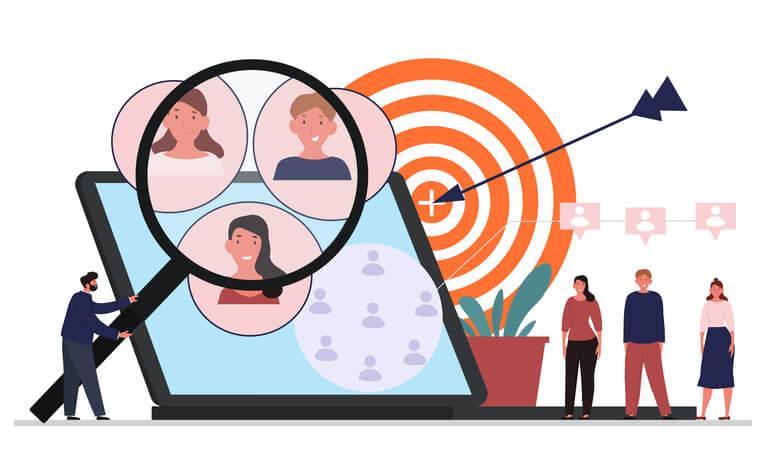
Measuring the Impact of Your Segmentation Efforts
Understanding the effectiveness of your segmentation strategies is crucial for optimizing your e-commerce operations. Once you’ve implemented various segmentation efforts, it’s time to measure their impact. Effectively evaluating the results will help you refine your strategies, ensuring that you are targeting the right customers in the right way.
One of the most effective methods for measuring impact is through key performance indicators (KPIs). Here are some essential KPIs to consider:
- Conversion Rates: Monitor how segmentation affects the rate at which targeted customers make a purchase.
- Customer Lifetime Value (CLV): Assess how well your segmentation strategies enhance the long-term value of customers.
- Return on Investment (ROI): Evaluate the financial return from your segmentation campaigns compared to the costs incurred.
- Engagement Metrics: Track metrics such as click-through rates and time spent on site to see how well your content resonates with different segments.
In addition to quantitative metrics, qualitative feedback can provide invaluable insights into customer perceptions and satisfaction. Consider conducting surveys or focus groups to gather feedback on how well your marketing efforts are being received by different segments. You might discover that certain segments appreciate personalized communication while others respond better to general promotions.
Another effective way to gauge the impact of your segmentation is through A/B testing. By testing different marketing messages or product recommendations on various customer segments, you can determine what resonates best and adjust your approaches accordingly. For instance, you could test a discount offer for a specific segment versus a bundled product offer to see which generates more sales.
To further analyze your progress, creating a dashboard to visualize your data can be highly beneficial. Below is a simple example of what your segmentation impact dashboard might look like:
| Segment | Conversion Rate (%) | CLV ($) | Engagement Score |
|---|---|---|---|
| New Customers | 2.5 | 150 | 75 |
| Repeat Customers | 5.0 | 300 | 90 |
| High-Value Customers | 8.0 | 600 | 95 |
Regularly review this data to identify trends and make informed decisions about where to allocate resources. If a specific segment shows lower engagement or conversion rates, it may warrant a deeper dive to understand the underlying issues.
Ultimately, is about creating a feedback loop. Use the insights gained from your KPIs, customer feedback, and testing to continuously iterate and improve your strategies. By staying adaptable and responsive to your customers’ needs, you’ll enhance your e-commerce success and build lasting relationships with your audience.
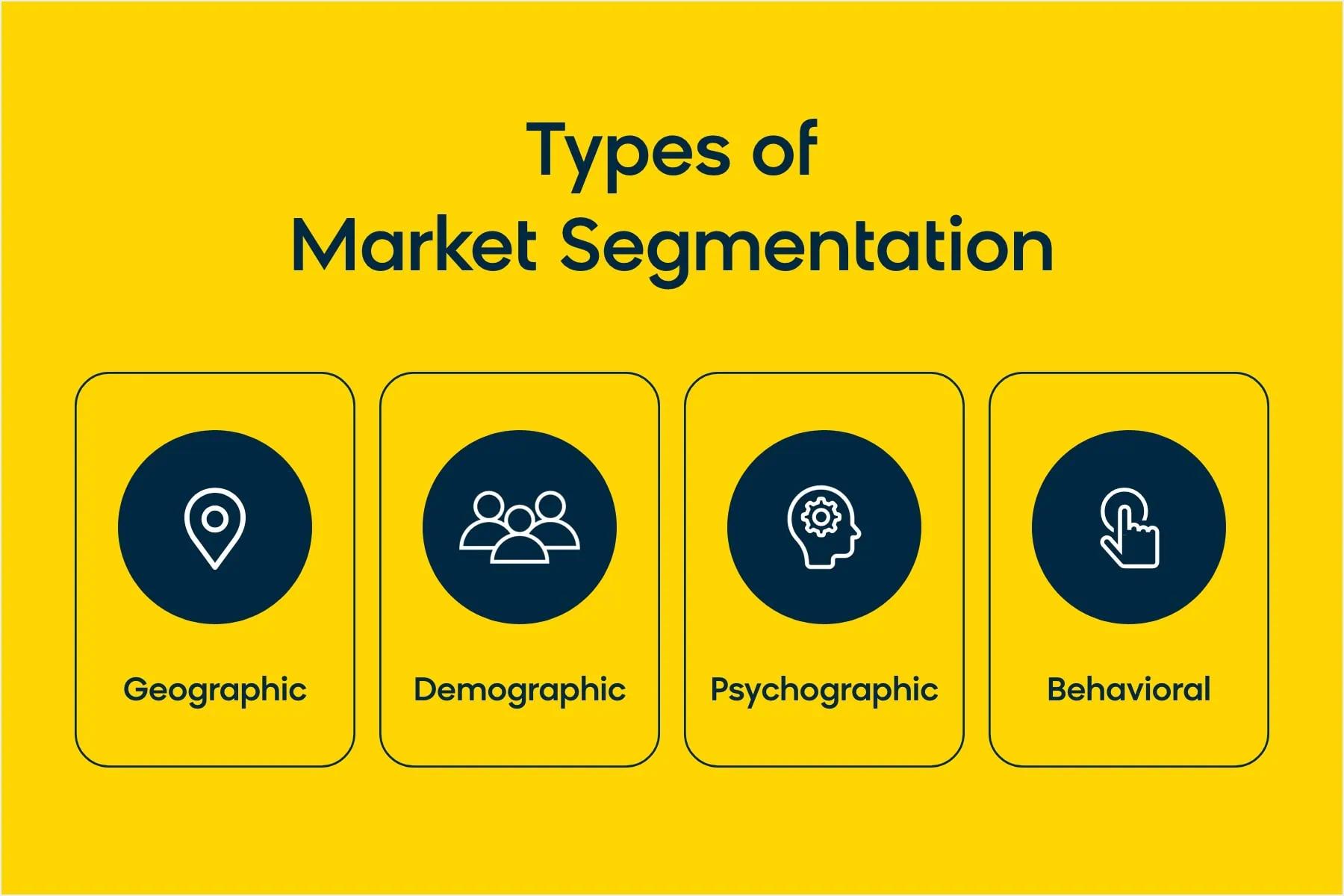
Adapting Your Product Offerings Based on Customer Segments
Understanding your customer segments is essential for tailoring your product offerings effectively. Each segment has distinct needs, preferences, and buying behaviors, and adapting your products accordingly can significantly enhance customer satisfaction and loyalty. Here are some strategies for aligning your offerings with your customer segments:
- Personalized Recommendations: Use data analytics to track purchasing behavior and browsing history. By offering personalized product recommendations, you can cater to individual customer preferences, increasing the likelihood of conversion.
- Targeted Marketing Campaigns: Design marketing campaigns that speak directly to each segment. Use language and images that resonate with them, and highlight features that matter most. For example, environmentally conscious customers may respond better to campaigns that emphasize sustainability.
- Product Bundling: Create bundles based on the unique needs of different segments. For instance, tech-savvy millennials might appreciate a bundle of smart home devices, while parents may prefer a combination of educational toys and learning resources.
Furthermore, it’s crucial to keep an eye on trends and shifts in customer preferences. For example, during holiday seasons, you might observe a spike in demand for certain products among specific segments. Adjusting your inventory accordingly ensures that you meet customer expectations and maximize sales opportunities.
Consider implementing tiered pricing strategies based on customer segments. For example, offer premium products to high-income segments while providing budget-friendly options for price-sensitive shoppers. This approach allows you to cater to diverse customer needs without alienating any demographic.
Additionally, actively seek feedback from different customer segments. Use surveys, reviews, and social media interactions to gather insights into what they value most. This information is invaluable for refining your product offerings and staying ahead of the competition.
| Customer Segment | Preferred Product Features | Marketing Approach |
|---|---|---|
| Millennials | Tech-savvy, eco-friendly | Social media campaigns, influencer partnerships |
| Parents | Safety, educational value | Email newsletters, parenting blogs |
| Luxury Shoppers | Exclusivity, premium quality | Personalized services, upscale events |
| Budget Shoppers | Affordability, discounts | Promotions, clearance sales |
By actively segmenting your customers and adjusting your offerings, you not only enhance the customer experience but also foster long-term relationships. This strategic adaptability ensures that your e-commerce business remains competitive and relevant in an ever-evolving marketplace.
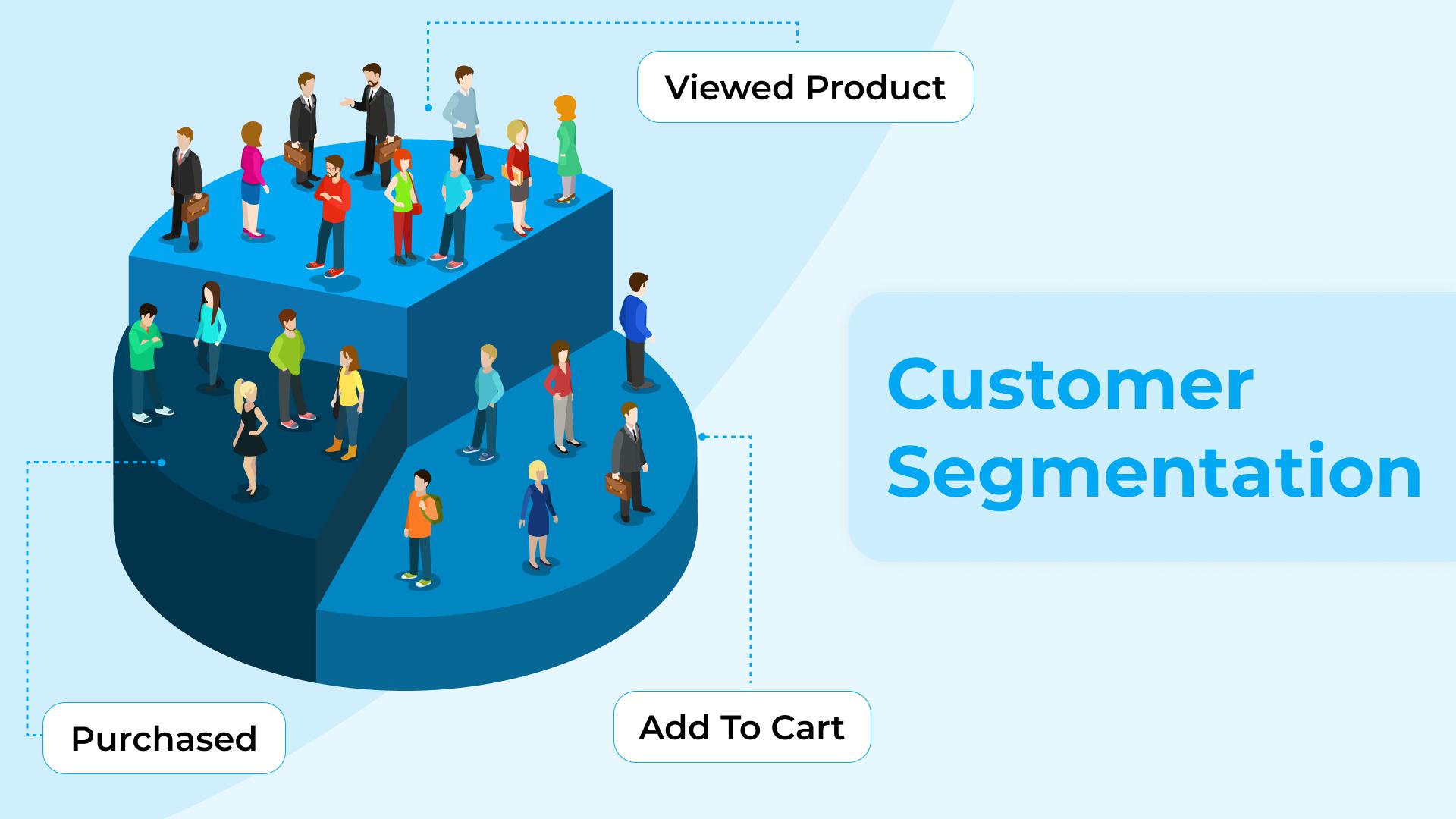
Case Studies: 13 E-commerce Brands That Mastered Customer Segmentation
Understanding your audience is a game-changer in the e-commerce landscape. These 13 brands illustrate how effective customer segmentation can lead to increased engagement, higher conversion rates, and ultimately, more revenue.
1. Amazon
Amazon’s recommendation engine is a prime example of customer segmentation in action. By analyzing purchase history and browsing behavior, they deliver personalized product suggestions, enhancing the shopping experience and driving sales.
2. Nike
Nike utilizes demographic data and customer preferences to create targeted marketing campaigns. Through their NikePlus program, they segment customers based on fitness goals and activity levels, ensuring relevant promotions and product offerings.
3. Sephora
Sephora has mastered the art of segmentation through its loyalty program, which categorizes customers based on their shopping frequency and spend. This allows them to tailor marketing messages, exclusive offers, and personalized recommendations.
4. Coca-Cola
Coca-Cola leverages psychographic segmentation by creating campaigns that resonate with different lifestyles and preferences. Their “Share a Coke” campaign is a perfect example, personalizing bottles with names and promoting a sense of connection.
5. Zappos
Zappos focuses on customer demographics and behavior to enhance service quality. By segmenting customers based on purchase patterns, they offer tailored customer service experiences that foster loyalty and repeat business.
6. Spotify
Spotify uses data analytics for behavioral segmentation. By understanding listening habits and preferences, they create personalized playlists and recommendations that keep users engaged and subscribed.
7. ASOS
ASOS segments its customers based on fashion preferences and shopping behavior. Their targeted email campaigns showcase specific styles, helping to convert leads into loyal customers through personalized experiences.
8. Warby Parker
Warby Parker uses a unique combination of demographic and behavioral segmentation. They analyze customer feedback and preferences to refine their product offerings and marketing strategies, enhancing customer satisfaction.
9. eBay
eBay employs segmentation based on user activity and buying patterns. Their “What to Buy” suggestions are tailored to individual users, making it easier for customers to discover items that match their interests.
10. Target
Target is known for using predictive analysis to segment customers based on shopping habits and life events. This enables them to market products aligned with customer needs at just the right moment, improving the likelihood of purchase.
11. Etsy
Etsy segments its customers based on artistic preferences and shopping behavior. By showcasing curated collections that align with specific interests, they enhance the shopping experience and drive conversions.
12. H&M
H&M utilizes geographic segmentation to tailor their marketing efforts and product offerings. By understanding regional fashion trends, they create localized campaigns that resonate with their target audiences.
13. Birchbox
Birchbox segments its customers based on beauty preferences and product usage. Their personalized subscription boxes ensure customers receive products that match their tastes, boosting retention and satisfaction.
| Brand | Segmentation Type | Strategy |
|---|---|---|
| Amazon | Behavioral | Personalized recommendations |
| Nike | Demographic | Targeted marketing campaigns |
| Sephora | Behavioral | Loyalty program segmentation |
| Coca-Cola | Psychographic | Campaigns tailored to lifestyles |
| Zappos | Behavioral | Customized customer service |
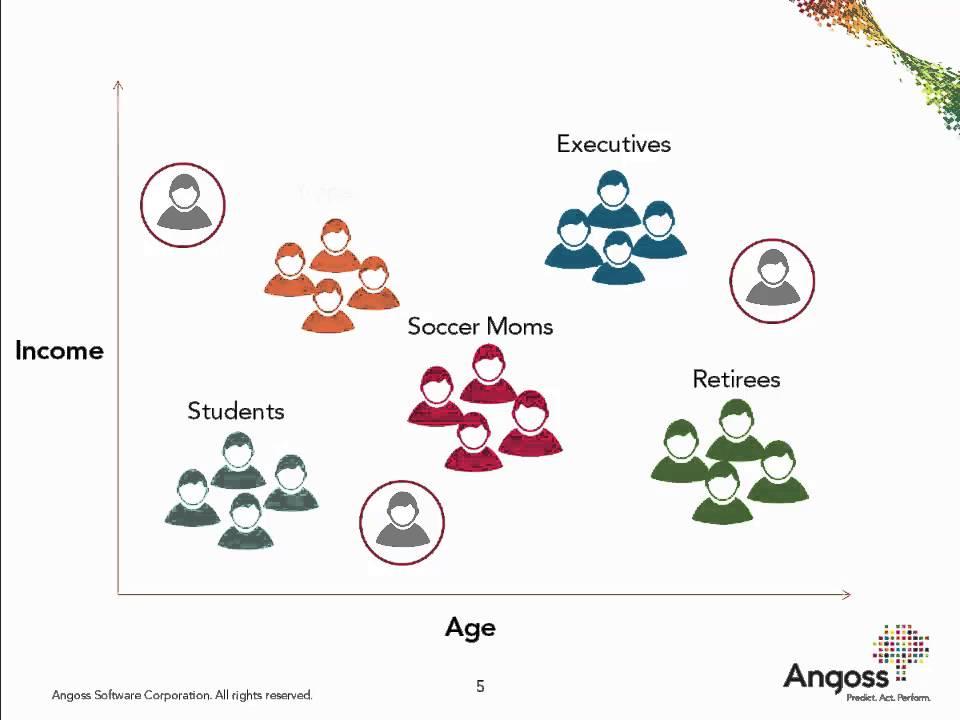
Future Trends in Customer Segmentation: What to Watch For
As e-commerce continues to evolve, the landscape of customer segmentation is shifting dramatically. Businesses must stay ahead of the curve by embracing new trends that leverage innovative technologies and changing consumer behaviors. Here are some key trends to keep an eye on:
- AI-Driven Insights: The future of customer segmentation lies in artificial intelligence. Advanced algorithms can analyze vast amounts of data to identify nuanced customer segments based on behavior, preferences, and purchasing patterns. This means more precise targeting and personalized marketing strategies.
- Hyper-Personalization: With consumers expecting tailored experiences, hyper-personalization will become the norm. Brands can utilize data not just from purchases but also from social interactions and browsing habits to create individualized shopping experiences that resonate deeply with every customer.
- Behavioral Segmentation: Moving beyond traditional demographic factors, behavioral segmentation focuses on how customers interact with products and brands. This approach allows businesses to identify segments based on engagement levels, loyalty, and purchase frequency, leading to more effective marketing campaigns.
- Real-Time Data Utilization: The ability to analyze customer data in real-time will enable brands to adapt their marketing strategies on-the-fly. This agility means you can respond to customer needs as they arise, enhancing satisfaction and loyalty.
- Inclusive Segmentation: As diversity becomes more prominent in consumer bases, brands must adopt inclusive segmentation strategies. Recognizing the unique preferences of different cultural, gender, and age groups will enhance customer connection and brand loyalty.
These trends will not only shape how businesses approach customer segmentation but will also foster deeper relationships with consumers. The emphasis on understanding and anticipating customer needs will drive engagement and ultimately improve conversion rates. For those willing to adapt and innovate, the rewards are substantial.
| Trend | Description |
|---|---|
| AI-Driven Insights | Using algorithms to analyze data for better customer segmentation. |
| Hyper-Personalization | Creating tailored experiences based on a multitude of customer data. |
| Behavioral Segmentation | Segmenting based on customer interactions rather than demographics. |
| Real-Time Data Utilization | Adapting marketing strategies based on real-time customer data. |
| Inclusive Segmentation | Recognizing diverse preferences among different demographic groups. |
the future of customer segmentation is bright and filled with possibilities. By harnessing these trends, e-commerce businesses can not only better understand their customers but also create experiences that foster loyalty and drive growth. The key will be to stay adaptable and open to emerging technologies and strategies that enhance customer engagement.
Frequently Asked Questions (FAQ)
Q1: What is e-commerce customer segmentation?
A1: Great question! E-commerce customer segmentation is the process of dividing your customer base into distinct groups based on shared characteristics. These can include demographics, purchasing behavior, preferences, and more. By understanding these segments, businesses can tailor their marketing strategies, product offerings, and customer experiences to better meet the needs of each group. This personalized approach can lead to higher engagement, increased sales, and better customer retention.
Q2: Why is customer segmentation important for e-commerce businesses?
A2: Customer segmentation is crucial for e-commerce businesses because it allows you to create targeted marketing campaigns that resonate with specific groups of customers. Instead of a one-size-fits-all approach, segmentation lets you speak directly to the interests and needs of different customers. This can significantly boost your conversion rates. Plus, it helps you allocate your marketing resources more effectively – you can focus on the segments that are most likely to generate revenue!
Q3: What are some common methods of customer segmentation?
A3: There are several methods of customer segmentation you can use, including:
- Demographic Segmentation: Age, gender, income level, and education.
- Geographic Segmentation: Location, climate, and regional preferences.
- Behavioral Segmentation: Purchase history, brand loyalty, and user engagement.
- Psychographic Segmentation: Lifestyle, values, interests, and personality traits.
Each method offers unique insights, and often, a combination of these approaches works best to create a well-rounded view of your customers.
Q4: Can you give me some examples of e-commerce customer segments?
A4: Absolutely! Here are 13 examples of effective customer segments:
- Frequent Shoppers: Customers who make regular purchases.
- Seasonal Buyers: Shoppers who buy around holidays or events.
- Bargain Hunters: Customers who primarily shop for discounts and deals.
- Luxury Buyers: Individuals who prefer high-end or premium products.
- New Customers: First-time buyers exploring your offerings.
- Loyal Customers: Repeat customers who are brand advocates.
- Cart Abandoners: Shoppers who leave items in their carts but don’t complete the purchase.
- Occasional Shoppers: Customers who make sporadic purchases.
- Social Media Influencers: Customers who engage with your brand on social platforms.
- Eco-Conscious Consumers: Shoppers who prioritize sustainability in their purchases.
- Tech-savvy Users: Customers who are early adopters of new technology.
- Mobile Shoppers: Individuals who mainly shop via smartphones or tablets.
- Gift Buyers: Customers purchasing items as gifts for others.
These segments can help you create targeted marketing messages that drive results!
Q5: How can I implement customer segmentation in my e-commerce strategy?
A5: Implementing customer segmentation involves several steps:
- Collect Data: Gather data on your customers through surveys, purchase history, and website analytics.
- Analyze the Data: Look for patterns and trends that indicate how your customers behave and what they value.
- Create Segments: Based on your analysis, group customers into segments that make sense for your business.
- Tailor Marketing Efforts: Develop targeted marketing campaigns for each segment, utilizing personalized messaging and offers.
- Test and Refine: Monitor the performance of your segmented campaigns and adjust your approach based on what works best.
By following these steps, you’ll be well on your way to maximizing the impact of your marketing efforts!
Q6: What tools can help with e-commerce customer segmentation?
A6: There are several great tools out there that can assist with customer segmentation:
- Google Analytics: Offers valuable insights into user behavior and demographics.
- CRM Software: Tools like HubSpot or Salesforce allow you to manage customer relationships and segment your audience effectively.
- Email Marketing Platforms: Services like Mailchimp or Klaviyo enable you to create targeted email campaigns based on customer segments.
- Survey Tools: Tools like SurveyMonkey or Typeform can help you gather valuable customer feedback.
Using these tools can simplify the segmentation process and enhance your ability to connect with your customers.
Q7: How do I know if my segmentation strategy is working?
A7: You can measure the effectiveness of your segmentation strategy through key performance indicators (KPIs) such as:
- Conversion Rates: Are customers in specific segments more likely to make a purchase?
- Customer Retention Rates: Are you seeing repeat purchases from segmented groups?
- Engagement Metrics: Are your email open and click-through rates improving?
- Sales Figures: Are you experiencing overall revenue growth as a result of targeted campaigns?
By regularly analyzing these metrics, you can determine what’s working, what’s not, and where you need to make adjustments. Remember, customer needs can change, so continual testing and refinement are key!
Q8: Any final tips for effective customer segmentation?
A8: Absolutely! Here are a few final tips:
- Stay Flexible: Customer segments may evolve, so be ready to adjust your strategies as needed.
- Focus on Insights Over Assumptions: Use data-driven insights instead of assumptions to define your segments.
- Personalize Your Approach: Tailored messaging goes a long way. Make sure to speak directly to the unique needs of each segment.
- Engage With Your Customers: Don’t hesitate to ask for feedback to better understand their preferences!
By following these tips, you’ll not only enhance your customer segmentation strategy but also create a more engaging shopping experience that keeps customers coming back for more. Happy segmenting!
Wrapping Up
As we wrap up our exploration of e-commerce customer segmentation, it’s clear that understanding your audience is more than just a strategy—it’s the heartbeat of your business. By implementing the techniques and examples we’ve discussed, you can tailor your marketing efforts to meet the unique needs of each segment, enhancing customer experience and driving sales like never before.
So, whether you’re just starting out or looking to refine your approach, remember that effective segmentation can unlock new opportunities for engagement and loyalty. Don’t hesitate to experiment, analyze, and iterate! Your customers are waiting for a personalized experience that speaks directly to them, and with the right segmentation strategies, you can deliver just that.
We hope this guide has inspired you to dive deeper into the world of customer segmentation. If you’re ready to take your e-commerce game to the next level, start applying these insights today. And don’t forget to share your own success stories and tips in the comments below—let’s learn from each other and grow together! Happy segmenting!



